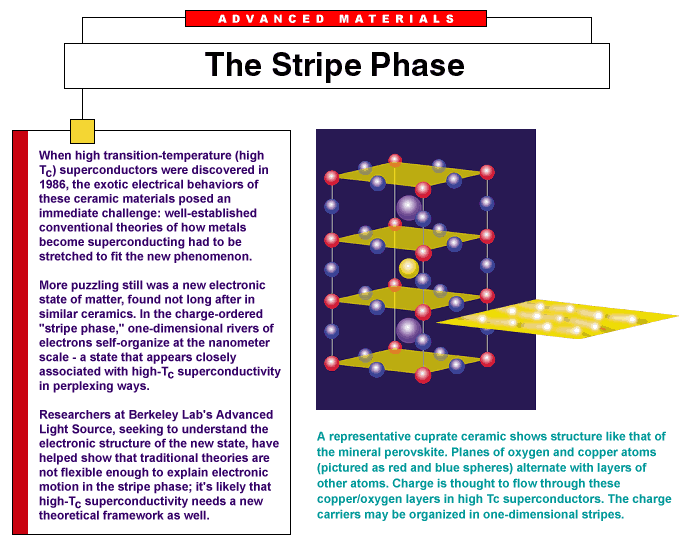 |
| E |
 |
stablished
theory holds that electrons in a metal lose their individual
identities and form a "gas" of quasiparticles-collective entities
with electron-like properties such as energy and momentum-which
experience the electromagnetic field of the solid's crystal
lattice. But if the temperature drops to within a few degrees
of absolute zero, particles can form pairs that move through
the lattice without resistance, and the material becomes superconducting.
|
|
